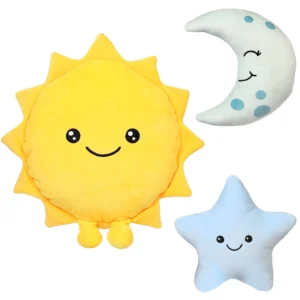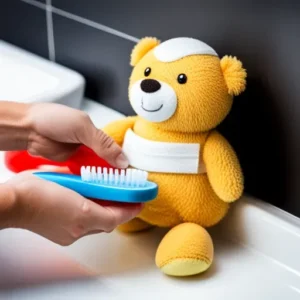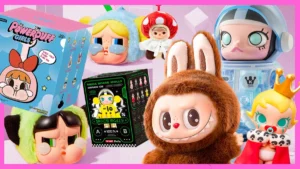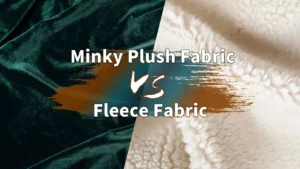Choosing the best fabric for plushies is crucial to ensure softness, durability, safety, and overall quality. The right fabric affects how the toy feels, looks, and performs.
Plush toy fabrics range from synthetic to natural fibers, each with unique traits. Understanding fabric types, their properties, safety compliance, and sustainability helps brands select the best materials for their products.
Let’s explore how fabric choice impacts plush toy manufacturing and customer satisfaction.
1.What Are the Most Common Fabrics Used in Plush Toy Manufacturing?
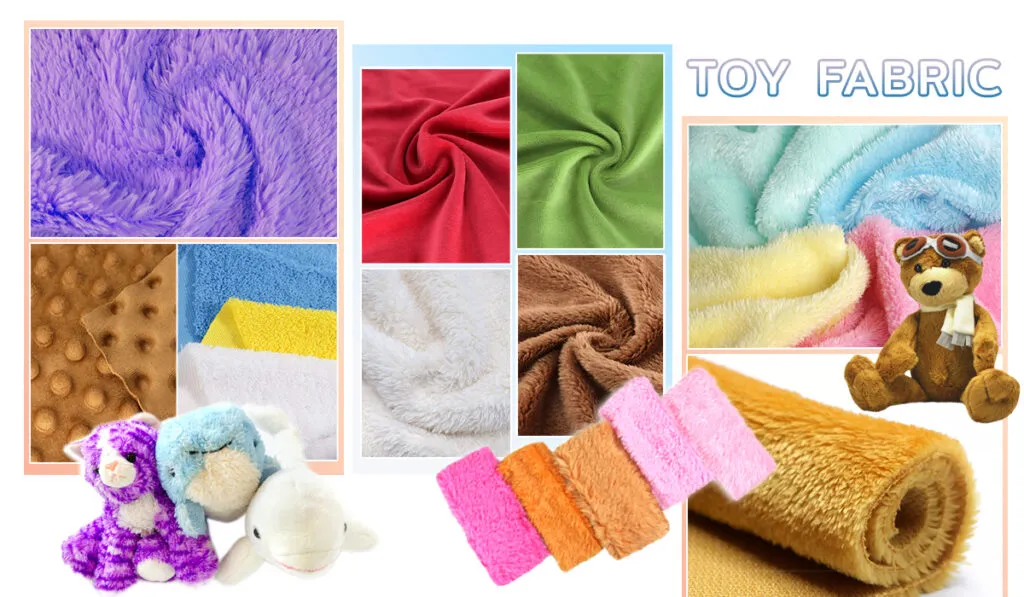
Plush toys commonly use fabrics like polyester minky, velboa, fleece, faux fur, and cotton blends. These materials offer a mix of softness, durability, and ease of production.
Polyester minky and velboa are popular for their soft texture and vibrant colors. Cotton blends add natural feel, while faux fur offers a realistic look. Each fabric suits different design needs.
Polyester minky is a smooth, dense knit fabric known for its luxurious softness and bright colors. Velboa has a shorter pile with a suede-like feel, ideal for certain plush styles.
Fleece offers warmth and stretch but can be less durable. Faux fur mimics animal fur and is often used for realistic stuffed animals.
| Fabric Type | Texture | Common Uses |
|---|---|---|
| Polyester Minky | Soft, plush, vibrant | Baby toys, character plushies |
| Velboa | Short pile, suede-like | Standard plush toys, pillows |
| Fleece | Soft, warm | Seasonal toys, wearable plush |
| Faux Fur | Long pile, realistic | Animal replicas, collector toys |
| Cotton Blends | Natural feel | Eco-friendly and specialty toys |
Understanding fabric traits helps align material choice with toy design.
2.How Do Fabric Properties Affect Plush Toy Softness and Durability?

The physical properties of fabric—like pile length, fiber type, and weave—determine how soft, durable, and resilient a plush toy will be.
Longer pile fabrics feel softer but may wear faster. Synthetic fibers generally offer higher durability and color retention, while natural fibers provide breathability and a premium feel.
Softness depends on fiber fineness and pile density. Minky’s dense knit and fine polyester fibers create an ultra-soft touch. Velboa’s shorter pile reduces snagging and is easier to clean.
Durability relates to fiber strength and resistance to abrasion. Polyester fibers outperform cotton in resisting wear and fading.
| Property | Effect on Plush Toys | Fabric Examples |
|---|---|---|
| Pile length | Longer = softer but less durable | Minky (long), Velboa (short) |
| Fiber type | Synthetic = durable, colorfast | Polyester vs cotton blends |
| Weave tightness | Tighter weave = more durable | Knitted minky vs woven fabrics |
| Stretch & recovery | Adds shape retention | Fleece and stretch blends |
Balancing softness with durability ensures a plush toy both feels great and lasts long.
3.Which Fabrics Offer the Best Safety and Compliance for Children’s Toys?
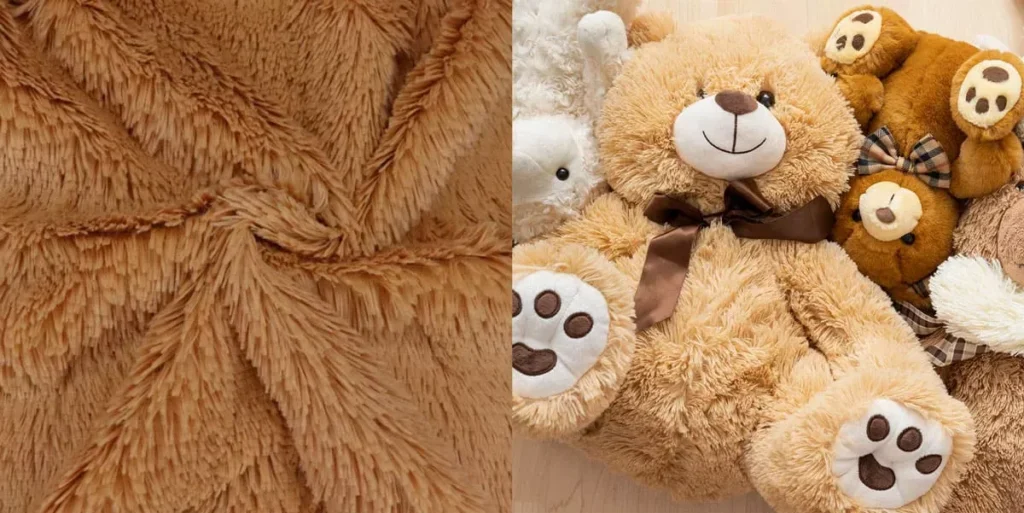
Safety standards require plush fabrics to be non-toxic, flame retardant, and hypoallergenic to protect children.
Polyester-based fabrics with appropriate certifications (OEKO-TEX, CPSIA compliance) are widely used for safety. Natural fibers need treatment to meet flame resistance and allergy requirements.
Certified polyester plush fabrics ensure no harmful chemicals or dyes are present. They resist bacterial growth and meet strict regulatory limits for children’s products.
Cotton and wool require flame retardant finishes to pass safety tests. Hypoallergenic fabrics reduce risks for sensitive skin.
| Safety Aspect | Importance | Typical Fabrics |
|---|---|---|
| Non-toxic dyes | Prevent chemical exposure | Certified polyester |
| Flame retardance | Required by law in many regions | Treated cotton, polyester blends |
| Hypoallergenic | Reduces allergic reactions | Synthetic polyester, treated natural fibers |
Choosing certified, safe fabrics aligns products with global market requirements.
4.How to Choose Fabrics Based on Plush Toy Design and Functionality?
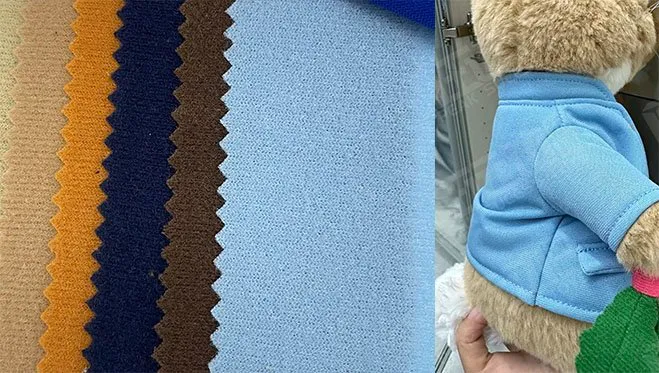
Design elements like shape, detail, and play style influence fabric choice. Soft cuddle toys differ from durable play toys in material needs.
Delicate, highly detailed toys benefit from smooth, fine fabrics like minky. Robust toys for rough use require tough, short-pile velboa or fleece.
Smooth fabrics enable intricate embroidery and printing. Velboa’s durability suits toys for active children. Faux fur enhances realism but may not suit rough play.
Consider the toy’s target age and use case when selecting fabric, balancing aesthetics and functionality.
| Toy Type | Recommended Fabrics | Key Considerations |
|---|---|---|
| Baby toys | Ultra-soft minky, organic cotton | Safety, gentleness |
| Play toys | Velboa, fleece | Durability, easy cleaning |
| Collectibles | Faux fur, specialty fabrics | Detail, realistic texture |
| Eco-conscious toys | Organic cotton blends | Sustainability, certification |
Matching fabric to design ensures the toy meets customer expectations and usage.
5.What Are the Advantages of Synthetic vs. Natural Plush Fabrics?
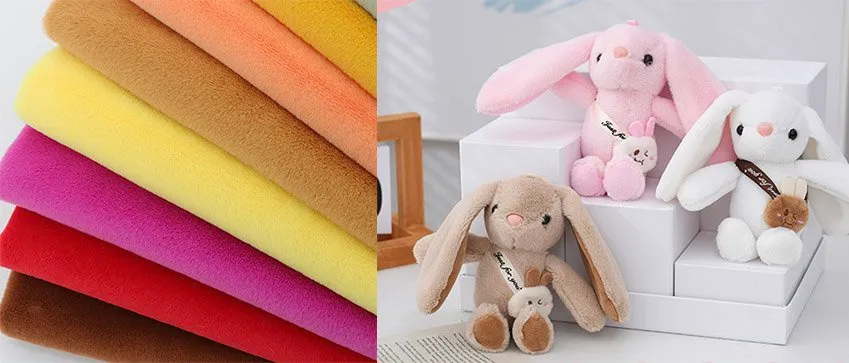
Synthetic fabrics offer vibrant colors, durability, and low cost, while natural fabrics provide breathability and eco-friendly appeal.
Synthetic plush fabrics like polyester are easy to clean and maintain, ideal for mass production. Natural fibers such as cotton feel premium but may require more care.
Synthetic fabrics resist stains, shrinkage, and fading, making them preferred for commercial plush toys.
Natural fabrics appeal to consumers seeking organic and sustainable products. However, they may have shorter lifespan and higher cost.
| Fabric Category | Advantages | Disadvantages |
|---|---|---|
| Synthetic (polyester) | Durable, colorfast, low cost | Less breathable, synthetic feel |
| Natural (cotton, wool) | Soft, breathable, eco-friendly | Higher cost, less durable |
Choosing between synthetic and natural depends on brand positioning and target market.
6.How Do Environmental and Sustainability Factors Influence Fabric Selection?

Growing demand for eco-friendly products pushes suppliers toward sustainable fabric options.
Organic cotton, recycled polyester, and biodegradable fibers reduce environmental impact. Certification and supply chain transparency are crucial for sustainable sourcing.
Sustainable fabrics use fewer chemicals, conserve water, and reduce waste. Recycled polyester saves energy compared to virgin production.
Certifications like GOTS (Global Organic Textile Standard) verify organic claims. Brands can highlight eco credentials to attract conscientious consumers.
| Sustainability Aspect | Benefit | Examples |
|---|---|---|
| Organic farming | Reduced pesticides and chemicals | Organic cotton |
| Recycling | Lowers resource use | Recycled polyester |
| Biodegradability | Minimizes landfill impact | Biodegradable fibers (emerging) |
| Certification | Ensures credibility | GOTS, OEKO-TEX |
Integrating sustainability enhances brand reputation and meets modern consumer expectations.
Conclusion
Choosing the best fabric for plush toys requires balancing softness, durability, safety, design needs, and sustainability. Selecting the right material ensures a quality product that delights customers and complies with global standards.
For expert guidance on plush toy fabrics and manufacturing, contact me at [[email protected]] or visit [https://plushtoyinchina.com].




